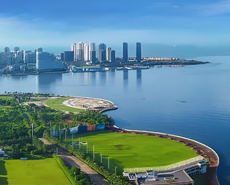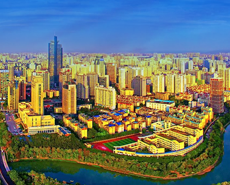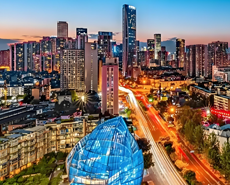
Chinese nickel market sees a bullish trend in H2 2021
----Interview with Lijun Lai
General Manager
Hangzhou Xinmao Metal Materials Co., Ltd.
General Manager
Hangzhou Xinmao Metal Materials Co., Ltd.
Located in Xiaoshan District, Hangzhou, Zhejiang with beautiful scenery and convenient transportation, Hangzhou Xinmao Metal Materials Co., Ltd. has been focusing on the integrated supply chain service of sales, transportation and after-sales of non-ferrous metals since its establishment 16 years ago. Adhering to the tenet of providing the best service at the best price, Hangzhou Xinmao Metal Materials has become a well-known company in metal trading service in East China after more than 10 years of tempering.
Asian Metal: Thank you for accepting the interview from Asian Metal. Could you please give us a brief introduction to your company, Mr. Lai?
Mr. Lai: Our Linengjian Group has a number of trading entities, among which Hangzhou Xinmao Metal Materials Co., Ltd. was established in 2005. For many years, we have been focusing on trading of non-ferrous metal products, mainly including copper, nickel, aluminum, lead, zinc, tin, etc., supplemented with minor metal products such as silicon, manganese, chromium and antimony. We are currently a well-known enterprise in Hangzhou as we aim at serving the market with high-quality and low-cost products. The nickel trade volume accounts for around 30% of the company's total trade volume now, and the company's total turnover is expected to exceed RMB300 million (USD46.32 million) in 2021.


Asian Metal: Could you tell us your upstream and downstream customers?
Mr Lai: Our company mainly deals in non-ferrous metals and minor metal products. Downstream customers are mainly traders and producers engaged in alloys, casting, electroplating, hardware and steel, who mainly come from the surrounding areas of Jiangsu, Zhejiang, Jiangxi and Anhui. We, as a service provider in tertiary industry, serve for a broad group of industrial customers. At present, we provide metal trading services for industrial customers in more than 10 provinces and cities across the country, mainly in East China, radiating across the country.
Asian Metal: What do you think are the advantages of East China as a major trading area?
Mr. Lai: The consumption boom of nickel cathode in East China originated in the 1990s. China was once a nickel-poor country until the discovery of a large amount of nickel-cobalt associated ores in Jinchang, Gansu in the 1970s, and then a world-class nickel smelting enterprise - Jinchuan Group - was born immediately. At that time, very few companies were engaged in nickel cathode trading, and even fewer in East China. The total trade volume was small, and the material was in short supply, so the sales profits were relatively high. With more and more companies engaged in nickel trading, East China has become one of the main gathering places for nickel cathode traders in the country, and it is also China's largest nickel cathode consumption area. In East China, the supply network based on Jiangsu, Zhejiang and Shanghai covers most provinces and cities across the country. Jiangsu, Zhejiang and Shanghai have formed the main trading clusters for nickel cathode, which benefits from the developed transportation network and the advantages of supporting industrial clusters. Moreover, it has another three advantages. First of all, the investment environment in East China is relatively loose and open, with superior business environment covering both competition and integration. Secondly, the local government has an orderly guidance for industry growth and its industrial policies have strong driving force, resulting in a good structural layout. Thirdly, it is close to the financial center of Shanghai and easy to trade as the futures exchange is near the delivery warehouse.


Asian Metal: Please illustrate the current supply and sales in East China, the major trading cluster of nickel cathode.
Mr. Lai: As far as we know, the annual consumption volume of nickel cathode in East China accounts for around 60% of the total in China. There are more than 200 nickel cathode consumers in East China, accounting for about 60% of the country. The number of traders exceeds 100, accounting for half of the country.
Asian Metal: Could you describe the important stages in respect of the big changes in nickel cathode consumption since you have been in the business for so many years?
Mr. Lai: The big changes can be divided into three stages. The first stage is 2005-2008, during which the nickel cathode experienced a consumption bull market. China was growing into a world-class manufacturing country during the period when the consumption of electroplating, alloys and special steel show explosive growth. The nickel cathode market was extremely prosperous at then, and many traders of nickel cathode emerged. In the later period, market deals have been very active and the market price of nickel cathode stayed at around RMB440,000 (USD67,938). The second stage is the 2011-2016 bear market, which is a turning point for price and demand of nickel cathode. Due to the breakthrough in nickel smelting technology, a large amount of low-grade lateritic nickel ore was converted into nickel-containing pig iron, which was widely used by the stainless steel plants with the largest demand. The price of nickel cathode went down all the way from RMB219,000/t (USD33,814/t) in early 2011 and dropped to as low as RMB65,000/t (USD10,036/t) in 2016. After a long period of time, a disproportionate amount of nickel cathode in the stainless steel field was replaced, and the demand for nickel cathode began to decline. It entered a stock accumulation stage for a long period. The third stage refers to the period from 2020 till now. Affected by the epidemic in early 2020, coupled with the drastic changes in the international industrial chain, domestic consumption has quickly fallen into a trough. Market participants held a strong wait-and-see attitude and were cautious in trading, so prices continued to weaken. In Q2, when the epidemic in China was effectively controlled but that in other regions abroad again deteriorated, China's position as the world's largest and most comprehensive industrial manufacturing country became prominent. The nickel price thus rebounded following a V-shape from the bottom of RMB94,000/t (USD14,514/t). Till now, the market gradually enters the recovery process of the post-epidemic era. We believe that the consumption of nickel cathode would rise steadily given the demand in traditional fields and the emerging fields. With the destocking, the price of nickel is also expected to keep rising.

















